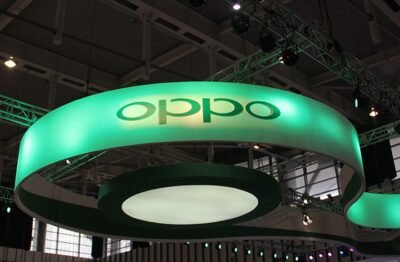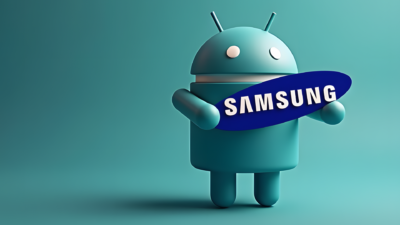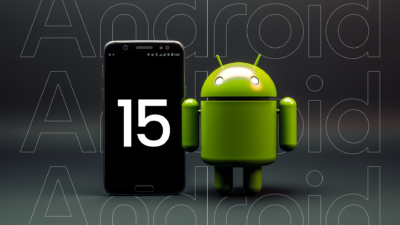Xiaomi And Oppo Eyes On Huawei’s Market Share In Europe

Recently, Lei Jun posted on his personal Weibo that Xiaomi’s mobile phone business has focused on the European market in the past two years and has entered the top three market shares. What Lei Jun said is true. Previously, Canalys, a market research organization, released a second-quarter smartphone monitoring report on the European market. The report showed that Xiaomi’s market share in the European market has surpassed Huawei, becoming the third place in the European market with a market share of 17%. The major mobile phone brands are second only to Samsung and Apple.
The market share of Xiaomi mobile phones in Europe surpassed that of Huawei, of course, is inseparable from Xiaomi’s own struggle. For example, in recent years, Xiaomi has more firmly implemented a dual-brand strategy, and the impact of the Xiaomi brand in the high-end market has achieved initial results. But objectively, Huawei is unable to provide Google services in overseas markets, so that it has given up more market share, which will inevitably provide an important realistic basis for Xiaomi to gain more European market share.
Today, due to the further escalation of sanctions, Huawei’s “core shortage” problem is becoming more and more urgent, and consumer business, especially overseas, will inevitably face more uncertainties. At this time, it is not just Xiaomi that is eyeing Huawei’s overseas “legacy”, other domestic manufacturers are also ready to move.
Huawei is still struggling
In fact, talking about Huawei’s “overseas heritage” now seems too pessimistic. Because Huawei has neither abandoning its consumer business plans nor showing any intention to abandon overseas markets. For the European market, Huawei has made an aggressive attitude.
Despite the heavy pressure, Huawei recently promised to make major efforts in the European consumer sector at IFA 2020. It announced plans to rapidly expand its retail scale and continue to invest funds in research and development to achieve market leadership. For example, by the end of this year, Huawei plans to open flagship retail stores in France, Spain, Belgium, Italy, Germany, and the United Kingdom, as well as 42 smaller experience stores.
At the same time, in response to the problem of not being able to access Google services, Huawei stated that its own AppGallery and Petal Search as “big new things” are already very safe and easy to use.
In short, Huawei has not completely lost confidence. It is still working hard to make attempts and is still committed to becoming a leader in the European market.
However, other domestic manufacturers have their own different judgments about the weight of Huawei’s confidence, otherwise they should be more cautious in their actions to increase the European market.
Xiaomi And Oppo are ready to move
A few days ago, news came out of the supply chain that OPPO smartphones are increasing orders to 850-100 million units. It is expected that OPPO will likely increase its expansion in the European market. The supply chain guess may not be accurate, but there must be a reason.
Compared with Huawei and Xiaomi, although OPPO’s market share in Europe is not that high, its growth rate is even more amazing. Canalys data shows that Xiaomi’s growth rate in the European market in the second quarter of this year was 65%. And Counterpoint data shows that OPPO has a three-fold increase in the European market over the same period last year.
In the second quarter of the epidemic, the decline of the European smartphone market became the norm. Only Xiaomi and Apple were growing in the TOP 5, while other manufacturers, including Huawei, were declining. The top manufacturers are still the case, and the decline of small and medium-sized manufacturers will only be more tragic. But in such a sorrowful market environment, OPPO actually achieved a three-fold increase, which is nothing short of a miracle. Behind this “miracle” lies OPPO’s ambition to continue to increase the European market.
Of course, OPPO is not the only one with such ambitions, Xiaomi’s ambitions are bigger than OPPO. In the second quarter, Xiaomi’s shipments in the European market increased by 65% year-on-year, and Huawei fell by 17% year-on-year. This enabled Xiaomi to surpass Huawei by a slight advantage and rank among the top three European smartphones. Next, if Xiaomi gains a firm foothold in the European high-end market, it will have a chance to replace Huawei in the European market and continue to challenge Samsung and Apple.
Regardless of how Huawei reacts, Xiaomi, and OPPO’s determination to continue to increase the European market has been demonstrated. There is no turning back in the bow. Even if Huawei can continue to maintain its European market share under many tests, Xiaomi and OPPO can only continue to increase investment, In order to gain more market share. Perhaps for Huawei, the more pragmatic question is, who in the European market will pose a greater threat to Xiaomi or OPPO in the future?
Who will be better than Xiaomi or OPPO?
The relatively open European market with high spending power is a must for Chinese smartphone manufacturers to explore overseas. Therefore, whether it is Huawei, which has been in business for a long time, or the fast-growing Xiaomi, or the even stronger OPPO, once it opens up in the European market, it will never exit easily.
Now that both Xiaomi and OPPO have opened their doors in the European market, who might be more competitive in the future? Judging from the current conditions, both sides have their own advantages.
First of all, from the perspective of market structure, Xiaomi has a significant lead.
Data shows that in 2019, Xiaomi’s shipments in the European smartphone market reached 18.533 million units, an increase of 67.1% year-on-year; OPPO increased by 1026.3% year-on-year and shipped 1.537 million units. In terms of volume, Xiaomi’s shipment volume is 12 times that of OPPO; in terms of growth, OPPO’s growth rate is 15 times that of Xiaomi. However, in the second quarter of this year, OPPO’s growth rate dropped to about 300%, while Xiaomi’s growth rate remained at 65%, OPPO’s growth rate fell sharply, and Xiaomi’s growth rate remained steady.
It can be seen that Xiaomi has established a firm foothold in the European market, while OPPO’s development in Europe is still in its infancy and its footing is not stable.
Secondly, from the perspective of brand influence, Xiaomi has been widely accepted, but OPPO is positioned at a higher end.
In view of market performance, the Xiaomi brand has been widely recognized by European consumers. But what is worth worrying about is that Xiaomi’s impact on the high-end market has only seen initial results in the past two years, to be precise, in this year’s Xiaomi 10 series. Prior to this, Xiaomi’s main attack in the European market was also the low-end machine market.
However, there are some differences between the European market and the Chinese market. With a higher proportion of high-end users, the high-end market deserves more attention. In other words, the cost-effective route practiced by Xiaomi before may cause certain obstacles to the high-end route of the Xiaomi brand in the European market, making it more difficult for the Xiaomi brand to hit the high-end, even more, difficult than in the Chinese market.
OPPO does not have too many concerns in this regard. OPPO’s first landing in the European market was when Find X was released in 2018. With Find X’s dual-track periscope structure, OPPO left a special impression on European consumers from the beginning. After that, OPPO has always been more biased in the European market. Take the high-end route. So in terms of brand influence, OPPO, which later entered the European market, may have some advantages over Xiaomi.
Finally, from the perspective of technological development, Xiaomi has accumulated deeper.
In fact, compared to Huawei, Samsung, and Apple, which are genuine global smartphone giants, other smartphone manufacturers are obviously at least one position inferior in terms of technology. This is a gap in the technical background, which is difficult to equalize in the short term. From the perspective of the Big Three, the technical strength comparison between Xiaomi and OPPO is like a rookie, but if compared seriously, Xiaomi is still stronger.
For example, in terms of chip design, it has been 5 years since Songguo’s first tape-out in 2015. Although there are not many commendable results so far, OPPO’s self-developed chips Only this year has the official big move started. Comparing the two, Xiaomi still has some accumulation, while OPPO has just started.
All in all, in the European market, perhaps OPPO will have certain advantages in hitting the high-end. However, considering all the conditions, in the European market, OPPO can’t be compared with Xiaomi in a short time.
In the long run, it depends on the outcome of Xiaomi’s impact on the high-end market in Europe. If it fails, then OPPO will catch up with Xiaomi sooner or later; if it does, OPPO will need to work harder.
Final Thoughts
In fact, the healthy competition among these domestic smartphone manufacturers in the overseas market is far stronger than the domestic market, the price war, or even mutual smear. Especially for the long-term development of these manufacturers, although the domestic market is large, it is clear that the global market can provide more sufficient development space.
In addition, once Huawei’s overseas consumer business has to stay dormant temporarily, instead of being taken away by Samsung and Apple, the market share that Huawei surrendered could be divided among domestic manufacturers such as Xiaomi and OPPO. But I hope that smartphone manufacturers such as Xiaomi and OPPO will not continue to follow the old path of “trade, industry, and technology”. After all, even globalized technology companies cannot do without the core technology.
Digital marketing enthusiast and industry professional in Digital technologies, Technology News, Mobile phones, software, gadgets with vast experience in the tech industry, I have a keen interest in technology, News breaking.











